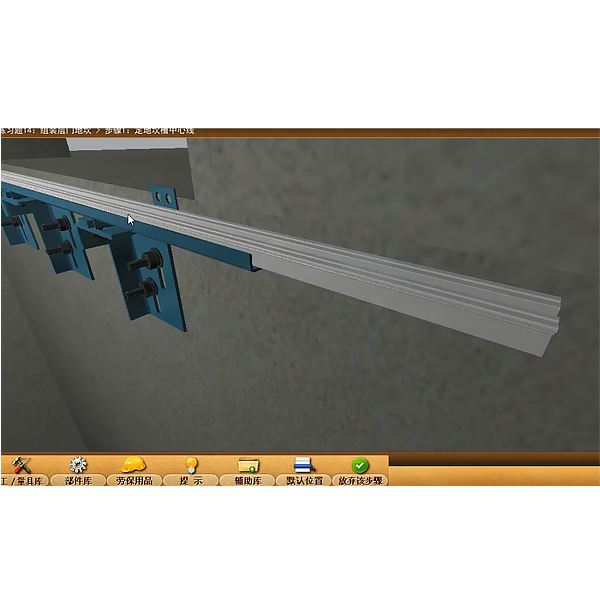
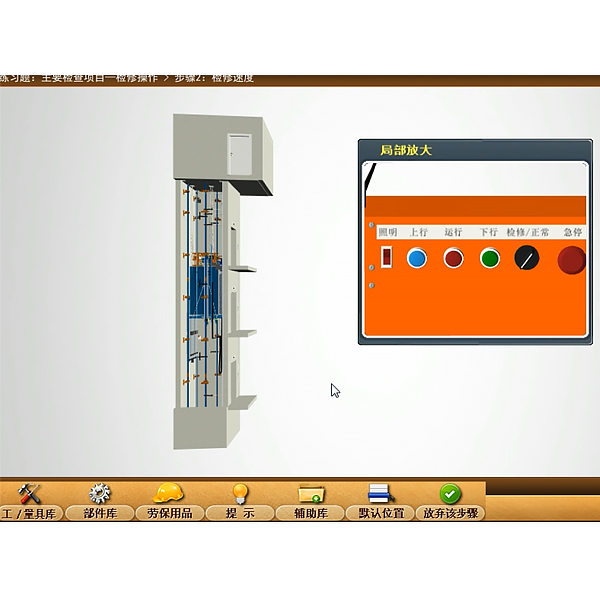
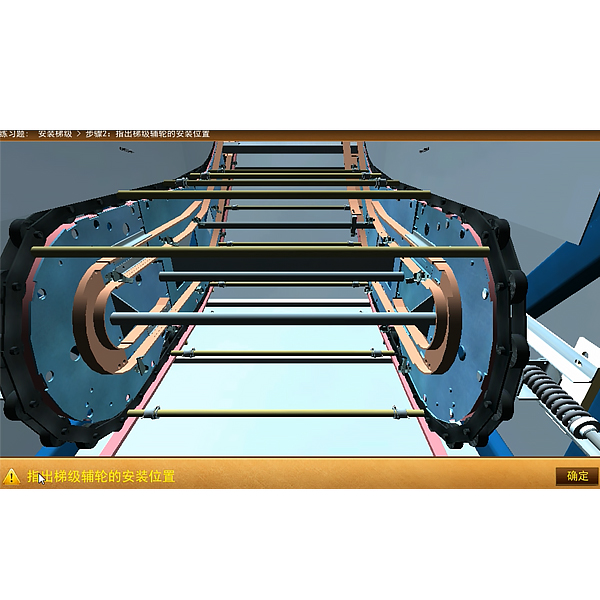
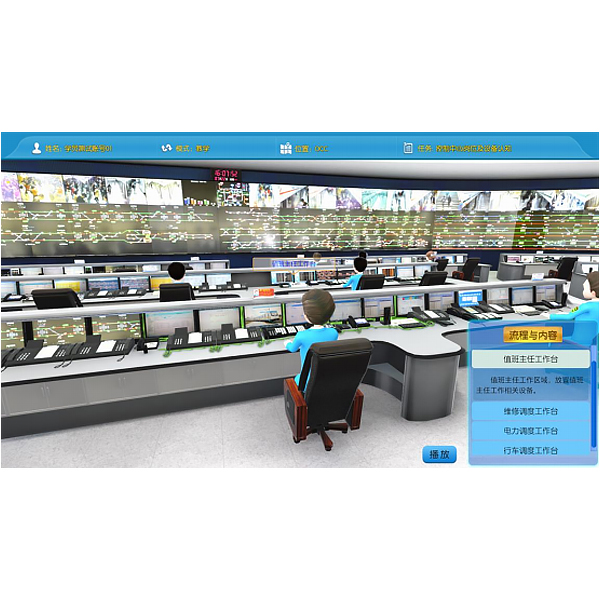
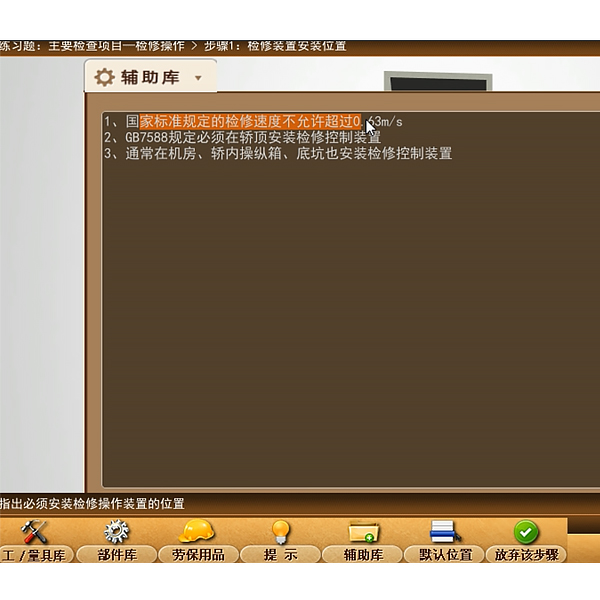
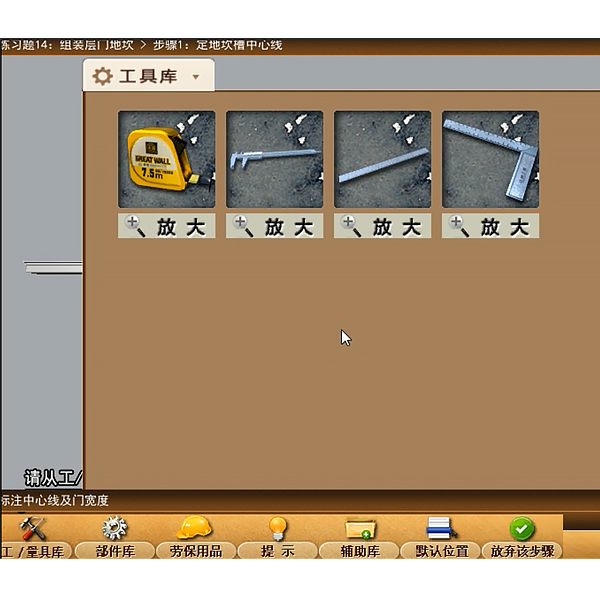
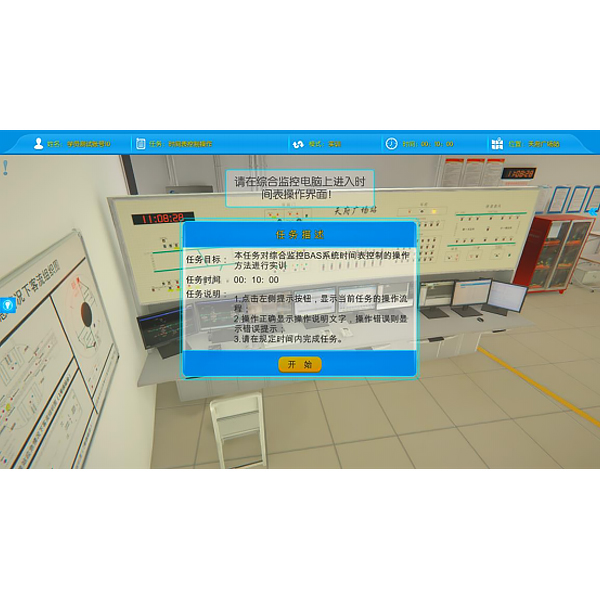
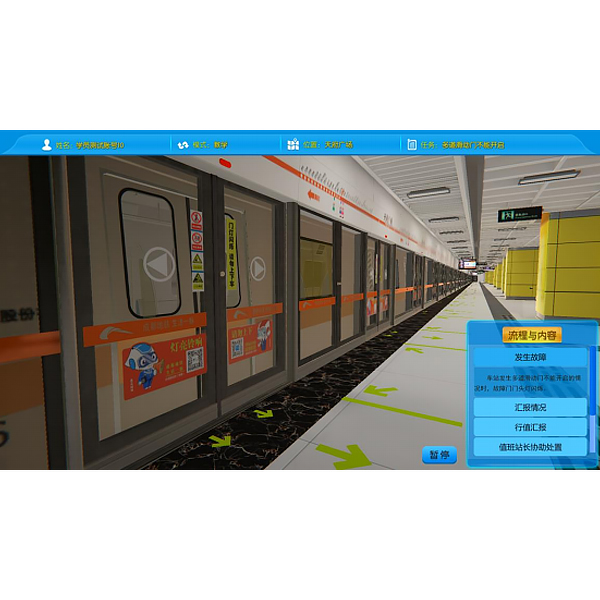
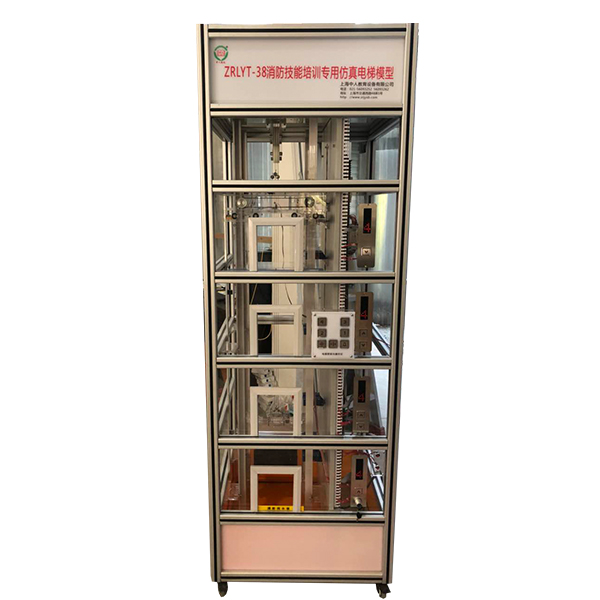



|
Dimensions: length*width*height=700*700*2100 Net weight: 135kg Loading capacity: 5kg Input voltage: 220V Input frequency: 50Hz Rated current: 1A Power: 50W |
Power: 50W Voltage: 24V Speed: 50 rpm Control mode: Mitsubishi PLC control Structure: Four-story station Elevator leveling mechanism: Permanent magnetic sensor |
| Serial number | name | unit | quantity |
| 1. | Elevator frame | set | 1 |
| 2. | Programmable Controllers | set | 1 |
| 3. | Computer room | set | 1 |
| 4. | Hoistway | set | 1 |
| 5. | Hall door part | set | 1 |
| 6. | Car part | set | 1 |
| 7. | Spring buffer device for car and counterweight | set | 1 |
| 8. | Door machine torque safety protection device | set | 1 |
| 9. | Automatic closing device for landing door | set | 1 |
| 10. | Terminal limit switch safety protection system | set | 1 |
| 11. | Gear motor | tower | 1 |
| 12. | Traveling cable | strip | 1 |
| 13. | Floor Summoning Box | piece | 4 |
| 14. | Control box in car | piece | 1 |
| 15. | Floor display | indivual | 4 |
| 16. | Electrical control panel | piece | 1 |
| 17. | Alarm buzzer | Only | 1 |
| 18. | Wiring board | piece | 1 |
| 19. | Limit switch (up, down) | Only | 4 |
| 20. | Hexagon wrench | set | 1 |
| twenty one. | Adjustable wrench 150mm | Bundle | 1 |
| twenty two. | Shaft ret*ning ring pliers 6# | Only | 1 |
| twenty three. | Needle Nose Pliers | Only | 1 |
| twenty four. | Phillips screwdriver | Only | 2 |
| 25. | Flathead screwdriver | Only | 2 |
| 26. | Teaching Elevator Instructions | book | 1 |
| 27. | Software, etc. | set | 1 |
| 28. | Fire call system | set | 1 |
| 29. | Fire linkage action channel | set | 1 |
| 30. | Hoistway lighting system | set | 1 |
| 31. | Bottom-level virtual pump system | set | 1 |
| 32. | Fire dr*nage device | set | 1 |
| 33. | Car bottom floor device | set | 1 |
| 34. | Fire water ret*ning device | set | 1 |
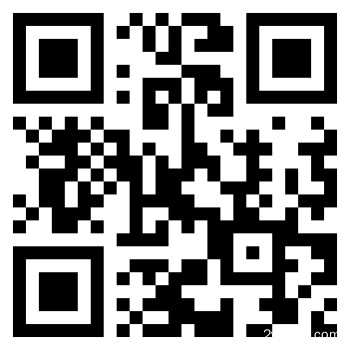 Wechat scan code follow us
Wechat scan code follow us

24-hour hotline+86 18916464525

Phone18916464525
ADD:Factory 414, District A, No. 6, Chongnan Road, Songjiang Science and Technology Park, Shanghai ICP: Sitemap